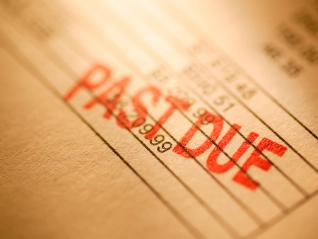
Chemicals Industry Trends July 2024

Here to help you

News

Case studies

Testimonials
Tari...


Pharmaceuticals businesses throughout the world are reviewing their operational and...

Trade tensions trigger higher insolvencies

Looking for safe havens in a divided region

Growing resilience tested by US policy shifts

Challenges currently impacting the global metals and steel industry include oversupply, clean energy transition with the increasing demand for green...

Our survey of companies in India reveals key insights into current B2B corporate payment trends. Explore emerging dynamics that could shape the...
Viewing 7 out of 141
Explore the trade-offs between credit insurance and self-insurance to protect cash flow and...



In an interconnected and volatile global economy, falling exports are more than a trade concern. They can...

Global disruptions...

Resilience planning can be the difference between business growth and catastrophic...

A high Days Sales Outstanding (DSO) can strain cash flow, heighten risk, and hinder growth. Proactively managing DSO through credit policies, prompt...

Calling a customer to ask for an overdue payment does require some skill. It can also feel uncomfortable to chase outstanding...
Viewing 7 out of 18
Thanks to this partnership, our clients in Spain can become sellers on Alibaba.com’s B2B marketplace without paying an entry fee


Europe has committed to a new era in...

Trade tensions, AI investment and geopolitical shifts dominate the global trade agenda. The key takeaway: business must...

The US President’s latest tariff threat exposes the weaponised interdependence that has become a flashpoint for...

Navigating global payment risk in a year of rising insolvencies and shifting customer behaviour

Our Q3 2025 Risk Map update underscores the widespread nature of country...

The President promised the return of millions of factory jobs, but rising investment pledges masks a mixed picture for US manufacturing
Viewing 7 out of 53


With the backing of Atradius’s resources, EnCom Polymers has been able to expand business with existing customers and go...

BVV GmbH grew internationally and recognised risks such as companies on the brink of insolvency in plenty of time to mitigate the...

Atradius Surety has enabled Vinci Construction France to expand their sources of finance beyond their...

How we are part of Continental Banden Groep B.V.'s business process, minimising risk and supporting sales

Ben Green, President and Owner at...

As a successful business, L’Oréal Hong Kong wanted a partner that could help protect their regional interests and support...
After adopting Atradius trade credit insurance, MBS found that their credit control processes improved so much that staff had more time to devote to clients.


Janson Bridging (International) uses export credit insurance from Atradius Dutch State Business (DSB) to offer favourable credit terms to customers...

Calidad Pascual partners with international credit insurance firm Crédito y Caución Atradius to gain additional knowledge of international markets.

Late payers prompted content marketing agency KMOdynamoo to take out an Atradius credit insurance policy and has resulted in better debtor management.

By providing open dialogue, insight and valuable credit information we helped Brook Green Supply improve their internal credit...

Our agility and local knowledge of worldwide markets and buyers are key reasons why textiles business Georg Jensen Damask say they collaborate...

El Ganso credits our support in helping the fashion brand grow from a domestic-focused Spanish startup to a successful international business.
Viewing 7 out of 9

































